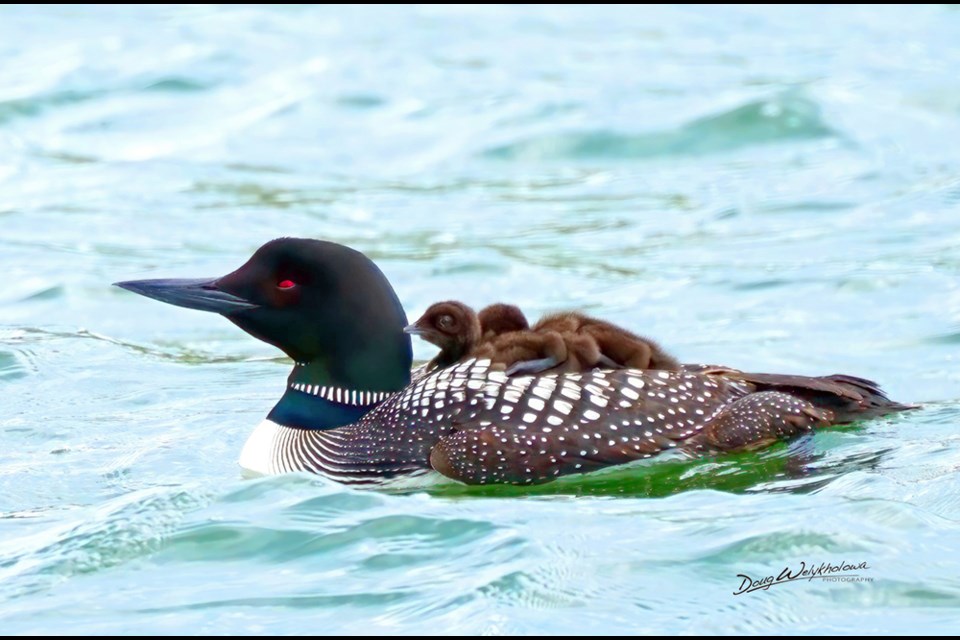MADGE LAKE — Valuable insights into the health and stability of the loon population on Madge Lake have been released with the Madge Lake 2023 final loon report.
Conducted annually since 2010, the survey is organized by the Yorkton Fish and Game Association's Loon Initiatives Committee and supported by various local organizations and authorities.
“A disturbing trend continues to be the average number of surviving juveniles produced on the lake," said Doug Welykholowa, chairperson of the YFBTA Loon Initiatives Committee said.
"Long-term studies by Birds Canada and organizations in the Northern States show that in order to maintain a viable loon population, the average number of surviving chicks (reaching six weeks of maturity) has to be above 0.47 chicks per breeding pair. Over the last 14 years, Madge Lake has averaged only 0.41 chicks surviving to six weeks per breeding pair. This indicates that the loon population on the lake may not be sustainable at the current levels in the future.
“As I have noted in previous reports, this is a trend right across North America. In the eastern provinces and Northeastern U.S., acid rain, pollution and resulting increases in methyl mercury are the main causes. Climate change is a contributing factor.
"Here at Madge, pollution and heavy metals are not thought to be significant, but this is an area that has not been properly studied. Predators, such as eagles, are also not believed to be a significant problem, however, other predators could be a problem. The one trend that we have observed that is of concern, is a significant increase in power boat traffic each year since we have kept records.
“Our observations indicate that the breeding pairs are taking extra measures to hide their young and keep them out of the high-traffic areas in most cases. Also, most pairs that occupy territories with high boat traffic, usually are unsuccessful in producing viable chicks.
"More research is required to produce definitive answers, but this is well beyond our local capabilities. Whatever the answer is, the loons are an excellent indicator of the health of our environment. What affects them, will have broad-reaching consequences in the future, and that should concern us all.”
According to the report, a total of 79 adult loons were counted on the lake this year, with 24 nesting territories observed. While the number of adult loons has fluctuated between 72 and 86 over the past 14 years, the number of occupied nesting territories has remained relatively consistent, averaging around 25 per year. This year it was recorded that there were 10 surviving juveniles, through the past 10 years the surviving juvenile population averages around 10 a year However, that number does fluctuate with only six surviving in 2015 and 16 surviving in 2017. The number of surviving juveniles produced on the lake remains a concern, with an average of only 0.41 chicks surviving to six weeks per breeding pair over the past 14 years. This is lower than the recommended threshold of 0.47 chicks per breeding pair needed to maintain a viable loon population.
“Extra juveniles have been spotted on the lake in late August and September every year once the adults start leaving," Welykholowa said. "They likely gravitate to Madge from the nearby smaller lakes once their parents have left to fly south.”
The survey also recorded three nests on the lake, with eight chicks hatched between mid-June and early July. Interestingly, one pair of chicks was observed riding on one of the loon's backs, suggesting that they may have been born earlier than previously thought.
“They may be the product of a second laying after the first eggs were likely lost,” said Welykholowa
Additionally, a group of unpaired young adults, estimated to be 3-5 years old, were spotted on the lake, with group sizes varying from three to 24 birds.
Other species spotted during the survey included a bald eagle with a large fish in its talons, a family of otters, a coyote swimming off Watt Island, pelicans, ospreys, blue herons, and a pair of trumpeter swans.
The report highlights the importance of monitoring the loon population, as they are an excellent indicator of environmental health. Factors such as pollution, heavy metals, acid rain, and climate change can impact the loon population, and the survey suggests that increased power boat traffic may be a concern for the breeding pairs.




